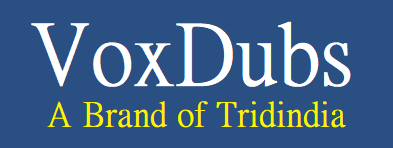In the fast-paced digital era, the significance of subtitling has skyrocketed, making it an indispensable tool for creating content that caters to diverse audiences. From short videos to feature-length films, subtitling has proven to be a powerful means of ensuring comprehension and enjoyment of content in any language through text-based translations.
What is Subtitling: A Window to Multilingual Content
Subtitles are textual lines displayed at the bottom of the screen that convey translated spoken dialogue. This invaluable feature facilitates language translation and comprehension, allowing viewers to enjoy content without language barriers. They are commonly employed in movies, TV shows, and YouTube videos, making content accessible to a global audience.
Types of Subtitling: Selecting the Right Fit
Subtitling comes in various types to suit different requirements and platforms. Let’s explore the two primary types:
1. Open Subtitling: Permanently Visible Translations
Open subtitles, also known as captions, remain fixed on the screen throughout the video. They are a popular choice for creators seeking a wider audience base. One advantage of open subtitling is that they are directly embedded into the video, eliminating the option for viewers to toggle them on or off. This can be ideal for platforms lacking closed captioning support.
Example: Movies extensively use open subtitles, providing written information in different languages to reach new markets effectively. The captions appear automatically, perfectly synchronized with the scenes.
Advantages of Open Subtitling:
1- User-Friendly: For viewers who prefer a seamless experience without adjusting subtitles, open captions are easy to read and follow.
2- Easy Integration: Content creators can effortlessly add open captions to videos without requiring additional platform support.
3- Customization: When opting for subtitling solutions, content creators have the freedom to choose caption styles, sizes, and fonts according to their preferences.
2. Closed Captions: Flexibility for the Viewer
Closed subtitling shares similarities with open captions but offers viewers control over their presence. Viewers can enable or disable closed captions based on their preference. This type of subtitling is favored by content creators targeting social media platforms like YouTube or Facebook, where a vast audience awaits accessible content.
Example: YouTube frequently uses closed captions, allowing users to activate or deactivate them through the settings feature.
Advantages of Closed Captions:
1- Hassle-Free Adaptation: Creators can easily modify closed captions directly on the platform, making language adjustments hassle-free.
2- Flexibility: Viewers can toggle closed subtitles on or off as needed, granting them the freedom to customize their viewing experience.
3- Compatibility: Closed subtitles support various file formats, making them suitable for a wide range of media players.
Conclusion: Embracing Subtitles for Exceptional Viewing Experiences
In today’s content-driven world, subtitles play a pivotal role in ensuring inclusivity and widespread accessibility. Whether you choose open or closed subtitling, understanding their distinctions is essential for making informed decisions.
If you’re planning to produce video content and require top-notch subtitle solutions, seeking the expertise of subtitling professionals can guarantee a seamless and engaging experience for your global audience. Subtitles not only bridge language gaps but also open doors to new possibilities, fostering connections and enriching the world of multimedia content.
For more information contact VoxDubs at +91-8527599201 or grab an instant quote.
